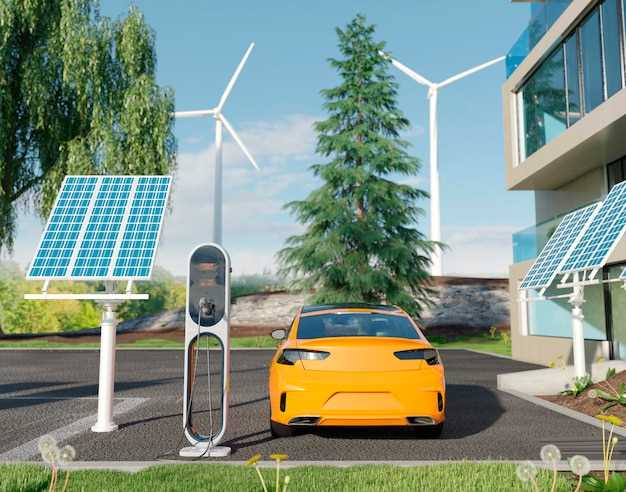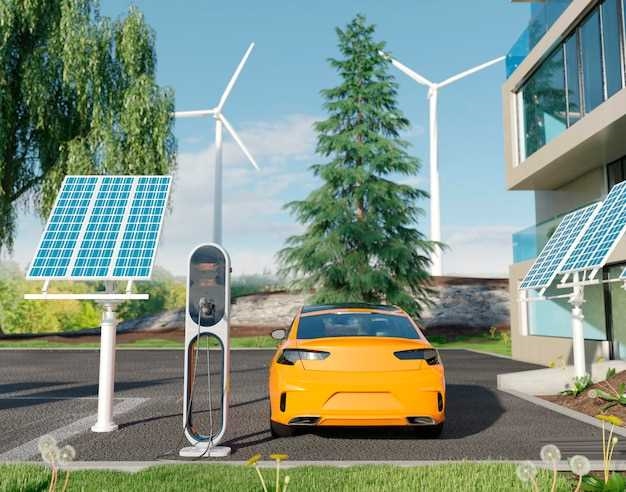
As the world races towards a more sustainable future, the need for efficient and reliable energy storage solutions has become paramount. In an era where every watt counts, innovative advancements are driving the transformation of the energy landscape. These groundbreaking developments are not only reshaping the way we store and utilize power, but also revolutionizing industries and empowering communities.
Unleashing the Potential: Empowering Renewable Energy
Renewable energy sources, such as solar and wind, have emerged as the backbone of a greener tomorrow. However, their intermittent nature poses a significant challenge when it comes to harnessing their full potential. This is where cutting-edge energy storage technologies step in, providing a seamless bridge between energy generation and consumption. By storing excess energy during peak production periods and releasing it during times of high demand, these solutions ensure a steady and reliable supply of clean power.
Empowering businesses and households alike, these energy storage innovations are unlocking the true potential of renewable energy, paving the way for a sustainable future.
Enhancing Grid Resilience: A Reliable Backbone
The stability and resilience of the power grid are crucial for the smooth functioning of modern society. However, the increasing integration of renewable energy sources and the growing demand for electricity have put immense pressure on the grid infrastructure. Energy storage solutions are playing a pivotal role in bolstering grid resilience by providing backup power during outages and stabilizing frequency and voltage fluctuations. These innovations act as a reliable backbone, ensuring uninterrupted power supply and safeguarding critical infrastructure.
By fortifying the grid with advanced energy storage technologies, we are building a more resilient and reliable energy infrastructure that can withstand the challenges of the future.
Lithium-ion Batteries: Revolutionizing Energy Storage
In the realm of energy storage, a groundbreaking innovation has emerged that is transforming the way we store and utilize power. Lithium-ion batteries, with their exceptional capabilities and versatility, are spearheading a revolution in the field of energy storage. These batteries have revolutionized the way we think about storing and accessing energy, offering a range of benefits that enhance efficiency, reliability, and sustainability.
Enhancing Efficiency

Lithium-ion batteries have proven to be highly efficient in storing and releasing energy. Their advanced chemistry allows for a higher energy density, meaning they can store more energy in a smaller and lighter package compared to traditional battery technologies. This increased energy density translates to longer-lasting power and improved overall efficiency in various applications.
Furthermore, lithium-ion batteries have a low self-discharge rate, meaning they retain their charge for extended periods without significant loss. This characteristic makes them ideal for applications where a constant and reliable power source is required, such as electric vehicles and renewable energy systems.
Ensuring Reliability
Reliability is a crucial aspect of energy storage solutions, and lithium-ion batteries excel in this area. With their stable and consistent performance, these batteries offer a reliable power source that can be counted on in critical situations. Whether it is powering essential medical equipment or providing backup power during outages, lithium-ion batteries have proven their reliability time and time again.
Additionally, lithium-ion batteries have a longer lifespan compared to other battery technologies, reducing the need for frequent replacements. This not only saves costs but also contributes to the overall reliability of energy storage systems, ensuring uninterrupted power supply for extended periods.
In conclusion, lithium-ion batteries have revolutionized the field of energy storage by offering enhanced efficiency and reliability. Their ability to store more energy in a compact form, coupled with their low self-discharge rate, makes them an ideal choice for various applications. Furthermore, their stable performance and longer lifespan contribute to the overall reliability of energy storage systems. As the demand for efficient and reliable energy storage solutions continues to grow, lithium-ion batteries are at the forefront, driving the industry forward and paving the way for a sustainable energy future.
Flywheel Technology: Harnessing Rotational Energy for Storage
In the realm of energy innovation, there exists a remarkable technology that taps into the power of rotation to store and release energy. This groundbreaking solution, known as flywheel technology, offers a unique approach to energy storage by harnessing the rotational energy generated by a spinning mass.
Imagine a massive wheel spinning at high speeds, effortlessly accumulating and preserving energy within its rotational motion. This ingenious system takes advantage of the principles of physics, utilizing the inertia of a rotating mass to store energy for later use.
The flywheel technology operates on the principle of conservation of energy, where the rotational energy is converted into potential energy and stored within the system. This stored energy can then be released when needed, providing a reliable and efficient source of power.
One of the key advantages of flywheel technology is its ability to rapidly respond to changes in energy demand. Unlike traditional energy storage solutions, flywheels can quickly discharge their stored energy, making them ideal for applications that require instant power delivery.
Moreover, flywheel technology offers exceptional reliability, as it does not rely on chemical reactions or degradation of materials over time. The rotational energy stored in flywheels can be maintained for extended periods without significant loss, ensuring a consistent and dependable energy supply.
Additionally, flywheel technology presents a sustainable and environmentally friendly solution. By utilizing rotational energy, it reduces the reliance on fossil fuels and minimizes greenhouse gas emissions, contributing to a cleaner and greener energy landscape.
In conclusion, flywheel technology represents a remarkable innovation in the field of energy storage. By harnessing the power of rotation, it offers a reliable, efficient, and sustainable solution for storing and releasing energy. With its ability to respond rapidly to changing energy demands and its long-term reliability, flywheel technology is poised to play a significant role in driving the efficiency and reliability of energy systems in the future.
Pumped Hydro Storage: Utilizing Gravity for Efficient Energy Storage
Pumped hydro storage is a groundbreaking technology that harnesses the power of gravity to efficiently store and release energy. This innovative solution utilizes the force of gravity to store excess energy during periods of low demand and release it during peak demand, ensuring a reliable and efficient energy supply.
By leveraging the natural properties of water and gravity, pumped hydro storage systems offer a sustainable and cost-effective solution for energy storage. These systems consist of two reservoirs located at different elevations. During periods of low demand, excess energy is used to pump water from the lower reservoir to the higher reservoir, storing potential energy. When energy demand increases, the stored water is released back to the lower reservoir, passing through turbines that generate electricity.
The utilization of gravity in pumped hydro storage systems offers several advantages. Firstly, it allows for large-scale energy storage, making it suitable for grid-level applications. Additionally, the efficiency of these systems is remarkably high, with energy conversion rates of up to 80%. This means that a significant amount of the stored energy can be effectively retrieved when needed.
- Efficient utilization of excess energy
- Reliable energy supply during peak demand
- Sustainable and environmentally friendly solution
- Scalable for grid-level applications
- High energy conversion rates
Pumped hydro storage has already proven to be a successful and widely adopted energy storage solution in various parts of the world. Its ability to store and release energy efficiently, coupled with its scalability and sustainability, make it a key driver in the quest for a reliable and resilient energy future.
Redox Flow Batteries: Enabling Scalable and Flexible Energy Storage
Redox flow batteries are a groundbreaking technology that revolutionizes the way we store and utilize energy. These advanced systems offer a scalable and flexible solution for storing electricity, providing a reliable and efficient means of meeting the growing demand for sustainable power.
Redox flow batteries operate by utilizing two electrolyte solutions, each containing different redox-active species. These solutions are stored in separate tanks and are circulated through a cell stack, where the electrochemical reactions take place. By controlling the flow of the electrolytes, the battery can store and release energy as needed, making it highly adaptable to various applications and power requirements.
One of the key advantages of redox flow batteries is their scalability. Unlike traditional battery technologies, which are limited by the size and capacity of individual cells, redox flow batteries can easily be scaled up by increasing the size of the electrolyte tanks. This makes them ideal for large-scale energy storage projects, such as grid-level applications or renewable energy integration.
Furthermore, redox flow batteries offer a high degree of flexibility in terms of energy output and discharge duration. By adjusting the flow rate and electrolyte composition, the battery can be optimized for specific power and energy requirements. This flexibility allows for the efficient utilization of renewable energy sources, which often exhibit intermittent or fluctuating power generation patterns.
| Advantages of Redox Flow Batteries |
|---|
| Scalability |
| Flexibility in energy output and discharge duration |
| Long cycle life |
| High efficiency |
| Low environmental impact |
In addition to their scalability and flexibility, redox flow batteries also offer a long cycle life, meaning they can be charged and discharged thousands of times without significant degradation. This durability makes them a cost-effective solution for long-term energy storage needs.
Moreover, redox flow batteries are known for their high efficiency, with the ability to convert stored energy back into electricity with minimal losses. This efficiency is crucial for maximizing the utilization of stored energy and minimizing waste.
Lastly, redox flow batteries have a low environmental impact compared to other energy storage technologies. The electrolyte solutions used in these batteries are typically composed of non-toxic and non-flammable materials, making them safe for both human health and the environment.
In conclusion, redox flow batteries represent a significant innovation in the field of energy storage. Their scalability, flexibility, long cycle life, high efficiency, and low environmental impact make them a promising solution for meeting the growing demand for reliable and sustainable power.
Thermal Energy Storage: Capturing and Releasing Heat for Power Generation
In the realm of sustainable energy solutions, the utilization of thermal energy storage systems has emerged as a promising approach to enhance the efficiency and reliability of power generation. By harnessing the principles of capturing and releasing heat, these innovative technologies offer a means to optimize energy usage and minimize waste.
Efficient Heat Capture
One key aspect of thermal energy storage is the efficient capture of heat. This involves the utilization of various materials and techniques to absorb and store thermal energy from renewable or waste heat sources. By employing advanced heat transfer mechanisms and materials with high thermal conductivity, the captured heat can be effectively stored for later use.
Thermal energy storage systems often employ phase change materials (PCMs) that undergo a transition from solid to liquid or vice versa, enabling them to store and release large amounts of energy during the phase change process. These PCMs can be integrated into different configurations, such as encapsulated within containers or embedded within building structures, to optimize heat capture and storage.
Optimized Heat Release for Power Generation
Once the heat is captured and stored, thermal energy storage systems enable optimized heat release for power generation. This involves the controlled extraction of stored heat and its conversion into electricity or other useful forms of energy. Various technologies, such as steam turbines, Stirling engines, or thermoelectric generators, can be employed to convert the thermal energy into mechanical or electrical power.
Furthermore, the flexibility of thermal energy storage systems allows for the efficient utilization of the stored heat based on the demand and availability of power. By strategically releasing the stored heat during peak demand periods or when renewable energy sources are not readily available, these systems contribute to a more reliable and stable power supply.
- Thermal energy storage systems can be integrated into existing power plants, enhancing their overall efficiency and reducing greenhouse gas emissions.
- These systems also have the potential to facilitate the integration of intermittent renewable energy sources into the grid, by providing a reliable and dispatchable source of power.
- Additionally, thermal energy storage can be utilized in district heating and cooling systems, improving energy efficiency and reducing reliance on fossil fuels.
In conclusion, thermal energy storage systems play a crucial role in capturing and releasing heat for power generation. By optimizing heat capture and release processes, these innovative solutions contribute to the efficiency, reliability, and sustainability of energy systems.
Advanced Capacitors: Enhancing Energy Storage for High-power Applications
In the realm of high-power applications, the quest for efficient and reliable energy storage solutions has led to significant advancements in capacitor technology. These cutting-edge capacitors are revolutionizing the way energy is stored and utilized, offering enhanced performance and improved power delivery.
Capacitors, often referred to as energy storage devices, play a crucial role in various industries where high-power applications are prevalent. They act as reservoirs of electrical energy, capable of storing and releasing it rapidly when needed. However, traditional capacitors have limitations in terms of energy density, power density, and overall efficiency.
Advanced capacitors, on the other hand, address these limitations by incorporating innovative materials and designs. These capacitors leverage state-of-the-art technologies to achieve higher energy and power densities, enabling them to meet the demands of high-power applications more effectively.
- Enhanced Energy Density: Advanced capacitors utilize novel materials with higher dielectric constants, allowing them to store more energy in a smaller volume. This increased energy density translates to longer operating times and reduced space requirements.
- Improved Power Density: By optimizing the internal structure and electrode configurations, advanced capacitors can deliver power more efficiently. This enhanced power density enables them to handle rapid charge and discharge cycles, making them ideal for high-power applications.
- Enhanced Reliability: Advanced capacitors undergo rigorous testing and quality control measures to ensure their reliability in demanding environments. They exhibit improved thermal stability, reduced internal resistance, and enhanced lifespan, offering a dependable energy storage solution for critical applications.
These advancements in capacitor technology have paved the way for significant improvements in various industries. From electric vehicles and renewable energy systems to aerospace and industrial applications, advanced capacitors are driving efficiency and reliability in high-power energy storage.
In conclusion, advanced capacitors are revolutionizing energy storage for high-power applications. Their enhanced energy density, improved power density, and enhanced reliability make them indispensable in industries where efficient and reliable energy storage is paramount. As technology continues to evolve, these capacitors will play a vital role in shaping the future of energy storage solutions.
